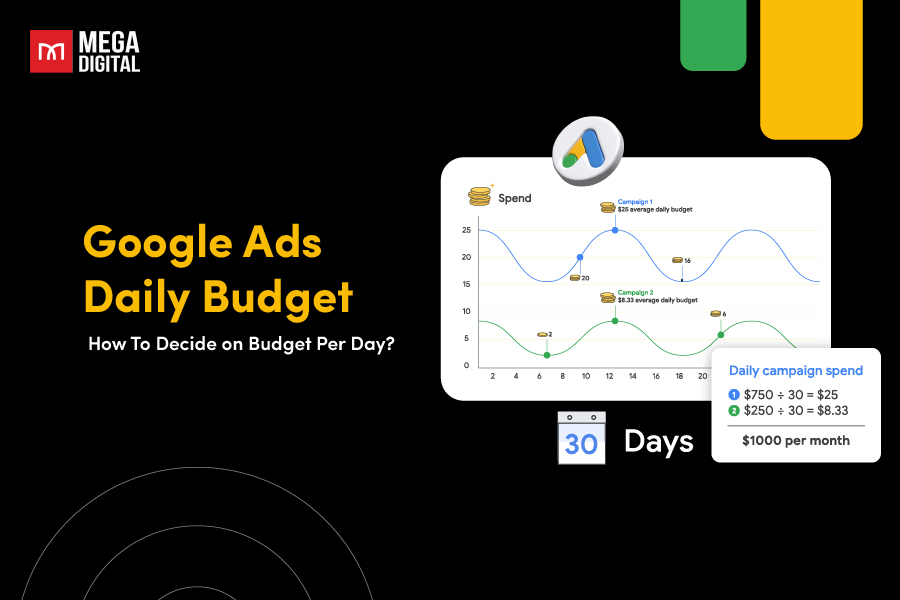CBO or ABO – which one actually works better? If you’re stuck choosing a budget strategy that fits your campaign goals, you’re not alone. In this guide on CBO vs ABO Facebook Ads, we’ll compare how each method works, when to use them, and which delivers better results for different campaign objectives.
What is CBO in Facebook Ads?
CBO, or Campaign Budget Optimization, is a Facebook Ads feature that manages the campaign budget. In 2025, Facebook refers to this feature as Advantage Campaign Budget.
Instead of setting a separate budget for each ad set, you set one budget at the campaign level. Then, Facebook will automatically allocate it to the best-performing ad sets. It will also adjust spending toward ad sets with the highest potential.
Hence, it is easier for you to manage campaigns, especially when you’re running multiple ad sets.
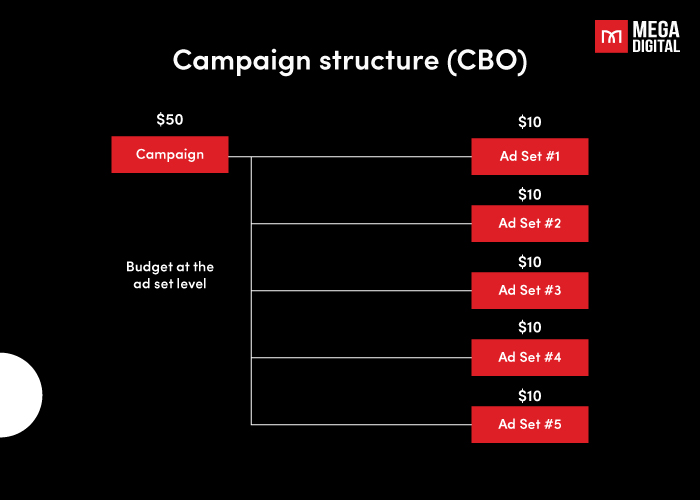
Imagine you set a daily budget of $100 for a campaign with ad sets targeting the U.S., Canada, and Australia. Facebook will automatically give more budget – $60 – to the US ad set that generates the best result.
What is ABO in Facebook Ads?
ABO, or Ad Set Budget Optimization, is a Facebook Ads feature that gives advertisers full control over how much to spend on each ad set.
Unlike CBO, an advertiser assigns a separate budget to every ad set manually on ABO. That way, you can specify just how much budget to give to each audience or creative variation.
Thus, it’s a particularly useful feature when you’re doing a test and want to ensure that every option gets an equal share of exposure.
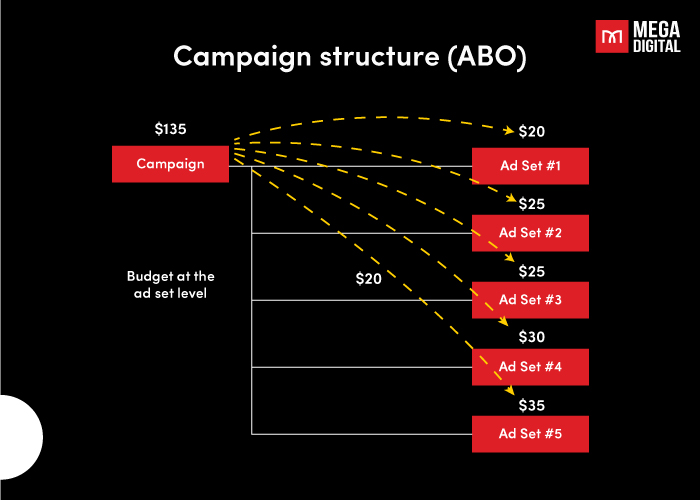
For example, you’re running a campaign with ad sets targeting the U.S., Canada, and Australia and assigning $33 to each. Facebook will spend that exact amount per ad set, even if one performs much better than the others.
Key Differences Between CBO vs ABO Facebook Ads
CBO and ABO offer very different ways of managing budget in Facebook Ads, and the method you choose can impact how your CBO and ABO campaign runs, how much control you have, and how effectively you reach your target audience.
Below, we break down the core differences across 6 key aspects:
Budget Level
Where your budget is placed is the most fundamental difference between CBO vs ABO.
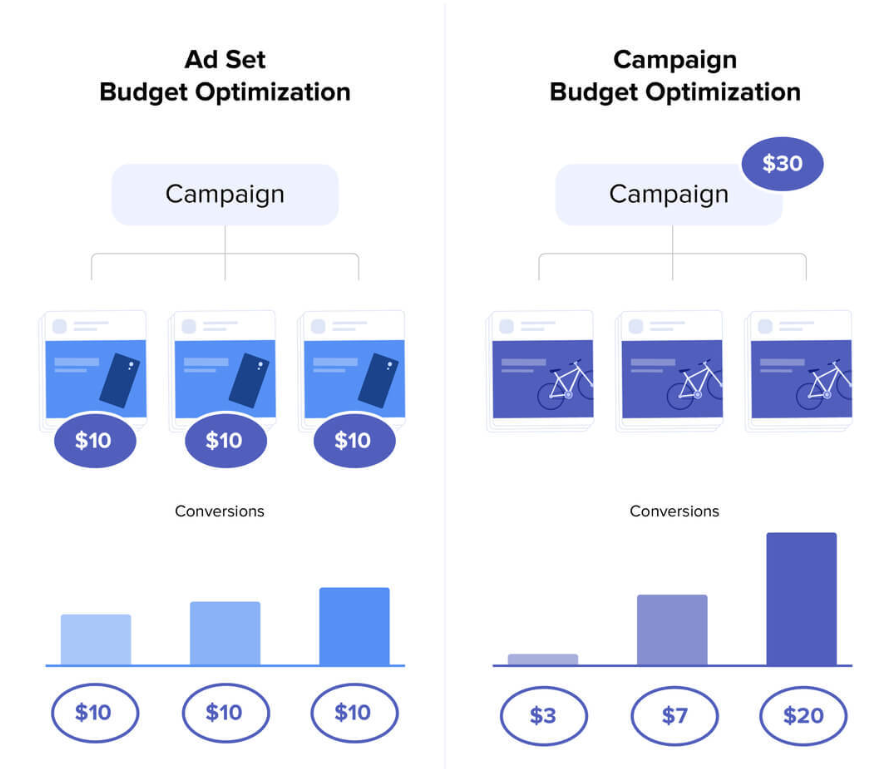
CBO
In CBO, the budget is set at the campaign level. Facebook automatically divides that budget across all ad sets based on real-time performance. Hence, you don’t need to assign separate budgets to individual ad sets.
ABO
In ABO, you assign a specific budget to each ad set. This means every ad set has its own spending limit. Facebook won’t move budget between them, even if one ad set performs better than others.
Conclusion
CBO uses a single campaign-level budget, while ABO gives each ad set its own dedicated budget.
Budget Allocation & Control
This aspect focuses on how the budget is distributed between ad sets and who controls that process.

CBO
With CBO, Facebook’s algorithm automatically adjusts how much each ad set receives during the campaign. It prioritizes high-performing ad sets and may reduce spending on underperforming ones.
For example, if you set a $100 daily campaign budget with 3 ad sets, Facebook might allocate $60 to the best-performing ad set, $30 to the next, and only $10 to the one with weaker performance.
ABO
In ABO, you have full manual control over how the budget is divided. Facebook will spend exactly what you assign to each ad set, regardless of how well they perform. If you split the same $100 by assigning $33 to each ad set, Facebook will spend those exact amounts.
Conclusion
CBO allows Facebook to manage budget allocation automatically based on performance, while ABO gives you direct control and fixed distribution across ad sets.
Audience Segmentation
How Facebook handles multiple target audiences within a campaign plays a big role in which budget strategy works best.
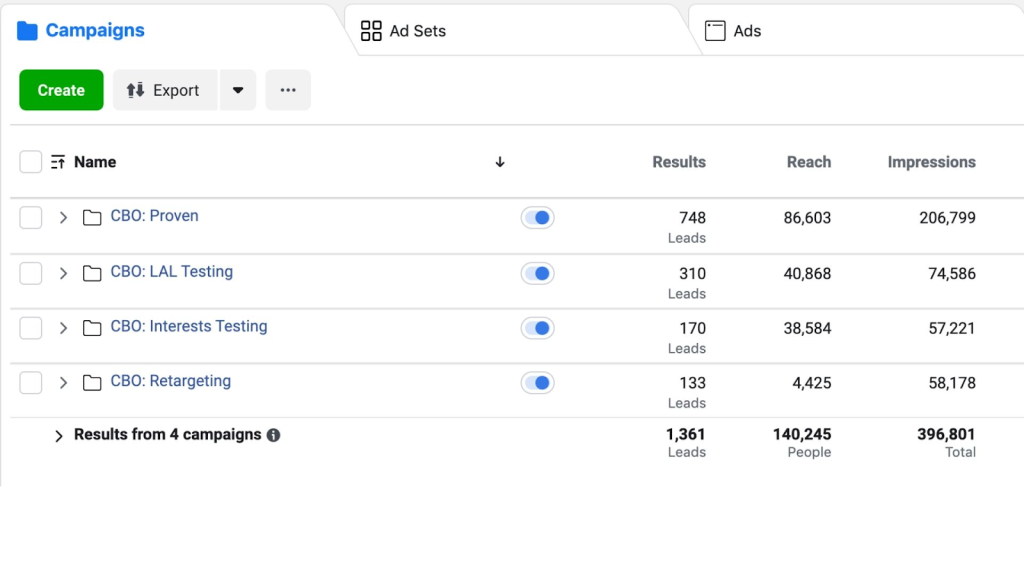
CBO
CBO works best when your ad sets target similar or overlapping audiences, such as different lookalike percentages or variations of the same interest group.
However, if your audiences are very different, for example, different countries or stages of the buyer journey, Facebook may favor one too early and limit the others before they’ve had a chance to prove themselves.
ABO
ABO is more effective when targeting distinct audiences that don’t overlap, like different countries or funnel stages. By assigning separate budgets to each ad set, you make sure each audience gets the visibility it deserves without competing against others for budget.
Conclusion
CBO is better suited for campaigns with similar audiences, while ABO is ideal for campaigns with clearly separated or unique target segments.
Learning Phase Management
The budget setup can affect how that phase performs on Facebook Ads.
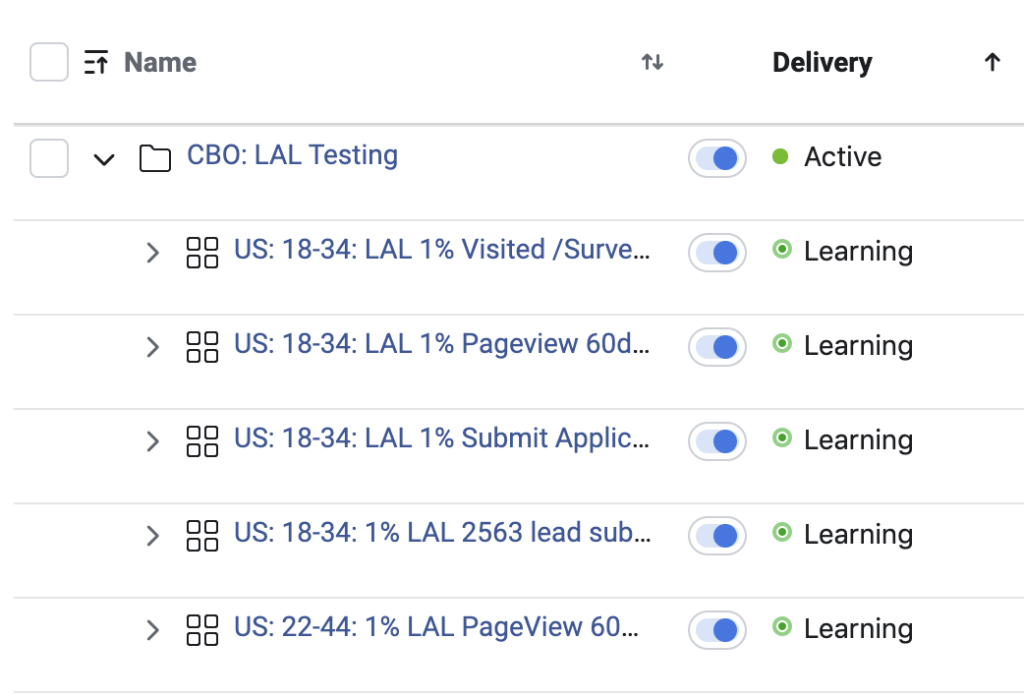
CBO
In CBO, ad sets share the same budget, so those that perform well early may absorb most of the budget quickly. This can prevent lower-performing ad sets from getting enough data to exit the learning phase effectively.
ABO
Since each ad set has its own budget in ABO, all ad sets have a fair chance to complete the learning phase independently. Facebook won’t cut short an ad set’s spend just because another one is doing better – they all run on their own budget path.
Conclusion
CBO can limit learning for underperforming ad sets, while ABO gives each ad set the space and budget it needs to learn fully.
Performance Distribution
Where performance is optimized and how success is measured across your campaign.
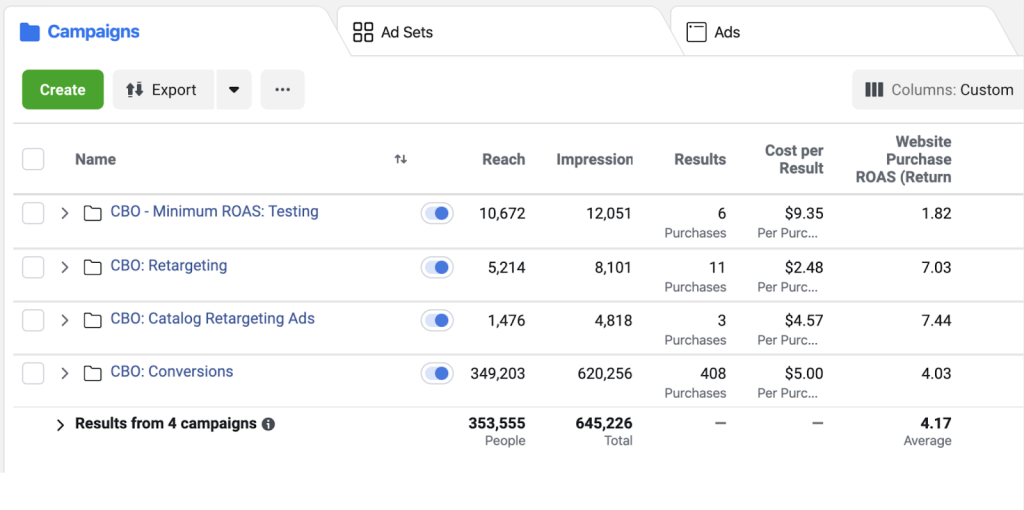
CBO
CBO aims to get the best overall results at the campaign level. Facebook directs more spend to the ad sets generating the most conversions, even if that means other ad sets barely spend. This could lead to a strong overall performance but uneven data across ad sets.
ABO
In contrast, with ABO, each ad set operates independently with its own results and budget. Since you control the spend per ad set, it’s easier to track which audiences or creatives truly perform better, making data analysis more straightforward.
Conclusion
CBO focuses on maximizing total campaign performance, while ABO allows clearer comparison of ad set performance side by side.
When To Use CBO vs ABO Facebook Ads?
Knowing when to use CBO vs ABO Facebook Ads depends on your campaign’s goals. Below are the key scenarios where each strategy works best!
When To Use CBO?
CBO is commonly used in situations where automation, scale, and simplicity can improve performance. If your campaign goals align with any of the following, CBO could be the smarter choice:
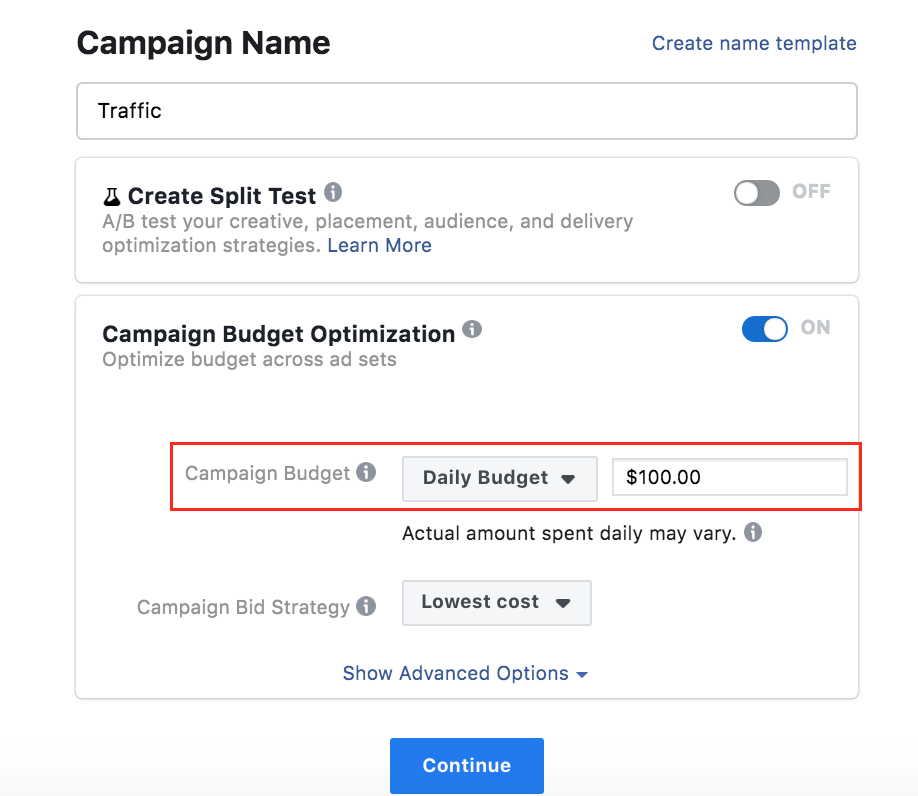
Running Broad or Lookalike Audience Campaigns
CBO works especially well when your targeting is wide or when you’re using multiple Lookalike Audiences that share similar traits.
For instance, if you’re targeting three Lookalike Audiences – 1%, 3%, and 5% based on past purchasers, CBO will automatically push more budget to the one converting best without you needing to adjust anything manually.
Scaling Winning Campaigns
Once you’ve tested your ad sets and found what’s working, CBO can help you scale without much risk. Instead of increasing the budget for each ad set individually, you can set a higher campaign-level budget and let Facebook handle the rest.
For example, if you have an ad set using a proven creative that’s consistently generating $5 purchases at a $20 daily spend, switching to CBO with a $200 daily budget allows Facebook to scale that ad set.
Managing Multiple Ad Sets
When you’re running a campaign with five or more ad sets, it can be overwhelming to track and adjust each one manually. CBO takes the pressure off by distributing your budget across ad sets based on real-time performance.
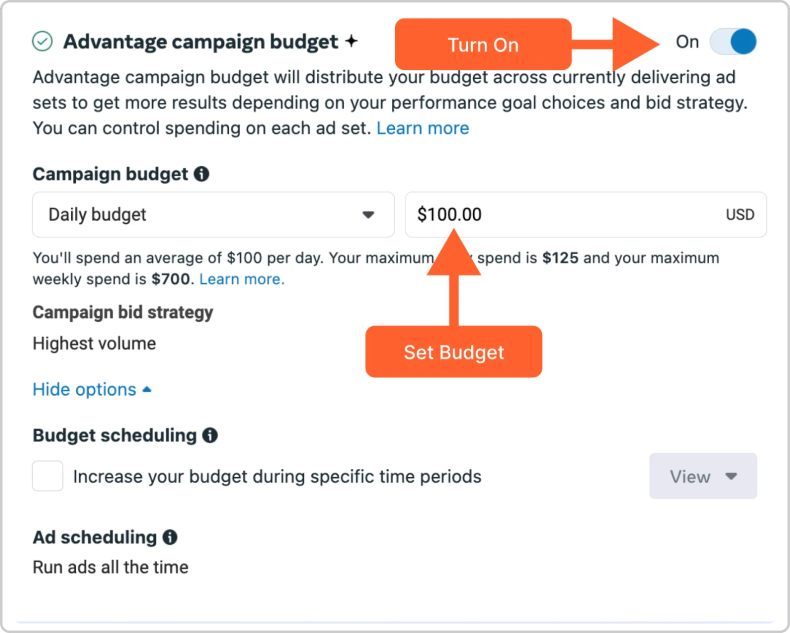
Wanting A Straightforward Approach
If you’re just starting with Facebook Ads or want a simpler way to run campaigns, CBO makes the process much more manageable.
Let’s say you’re launching your first campaign to promote an online course with 3 different audience ad sets – one for website visitors, one for email subscribers, and one for a cold audience.
All you need to do is set a budget, sit back, and watch as Facebook allocates spending to the ad sets for email subscribers. Thanks to this feature, you don’t need to worry about adjusting ad sets constantly.
4.6. When To Use ABO?
ABO is a great choice when you want more control over how your budget is distributed. Here are the key situations where ABO makes the most sense!
Testing New Audiences
If you’re exploring different audience types that fall under the same overall market or demographic group, ABO prevents the algorithm from favoring one group too early and skewing your results.
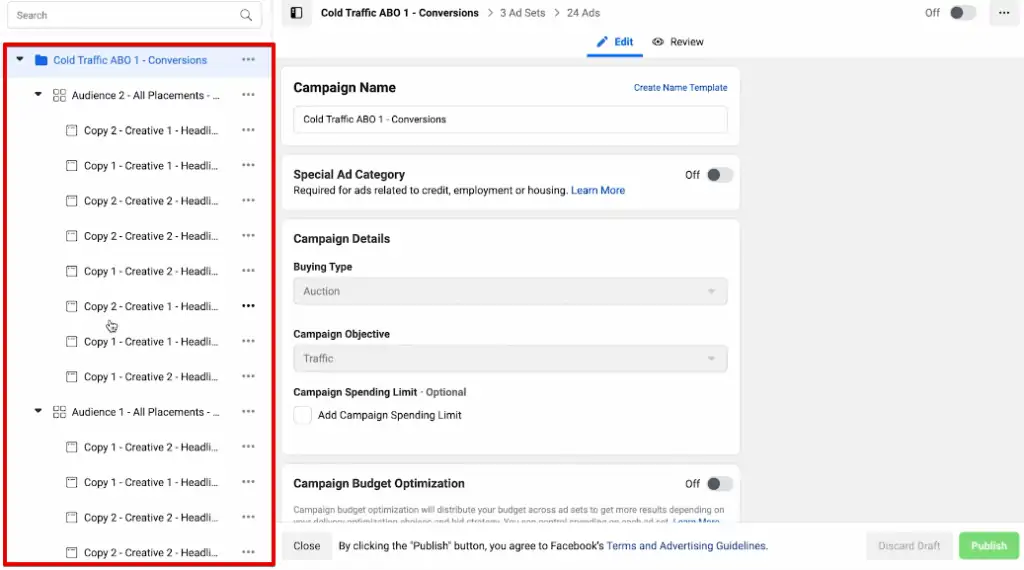
For example, if you’re targeting different audience segments within the beauty market such as skincare enthusiasts, makeup lovers, and anti-aging product shoppers, ABO lets you see which sub-group responds best under equal conditions.
Testing New Creatives
ABO is a reliable method for testing different ad creatives when you want to see which version performs best. A common setup is to place one creative in each ad set and give them the same budget.
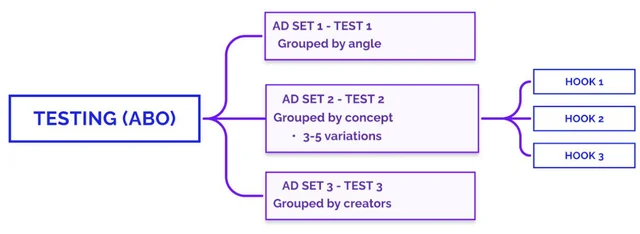
For example, if you’re promoting a new running shoe video, you might test one with lifestyle visuals, one with a product demo, and one with a customer testimonial. ABO lets you measure which message resonates best with your audience without early bias.
Maintaining Specific Budget Allocations
If your campaign strategy requires strict control over how much is spent on different audience segments or stages of the funnel, you can assign unique budgets to each ad set based on your goals.
Imagine your campaign includes cold traffic, warm leads, and past customers, and you want to focus most of your budget on attracting new users. ABO then lets you assign more budget to cold traffic as your strategy intends.

Requiring Granular Control
Since each ad set operates on its own budget in ABO, you can pause or tweak one without affecting the others.
For instance, if you’re targeting New York, Los Angeles, and Chicago in three separate ad sets and the Chicago ad set starts underperforming, you can turn it off without disrupting the delivery or budget of the other two.
This kind of independent control is harder to manage under CBO, where ad sets share one central budget.
Which Is Better: CBO or ABO?
Deciding between CBO vs ABO Facebook Ads really depends on what you want to achieve. There’s no one-size-fits-all answer. The key is knowing when to use them based on your campaign goals, level of control, and testing needs.
Here’s a quick side-by-side comparison to help you choose the right approach:
| Aspects | CBO | ABO |
|---|---|---|
| Budget Level | Set at campaign level Auto-distributed |
Set at ad set level Manually assigned |
| Budget Allocation & Control | Facebook controls spending based on performance | Advertiser controls a fixed budget per ad set |
| Audience Segmentation | Works best with similar or overlapping audiences | Ideal for distinct, non-overlapping audiences |
| Learning Phase Management | May limit learning for low-performing ad sets | Each ad set learns independently |
| Performance Distribution | Focuses on overall campaign results | Allows clear comparison across ad sets |
In general, if you want automation and easy scaling, go with CBO. If you need control and clean test results, ABO is your best bet. It all depends on your campaign goals.
Still need further help deciding on or setting up your next campaign? Contact Mega Digital for expert support with Facebook Ads.







